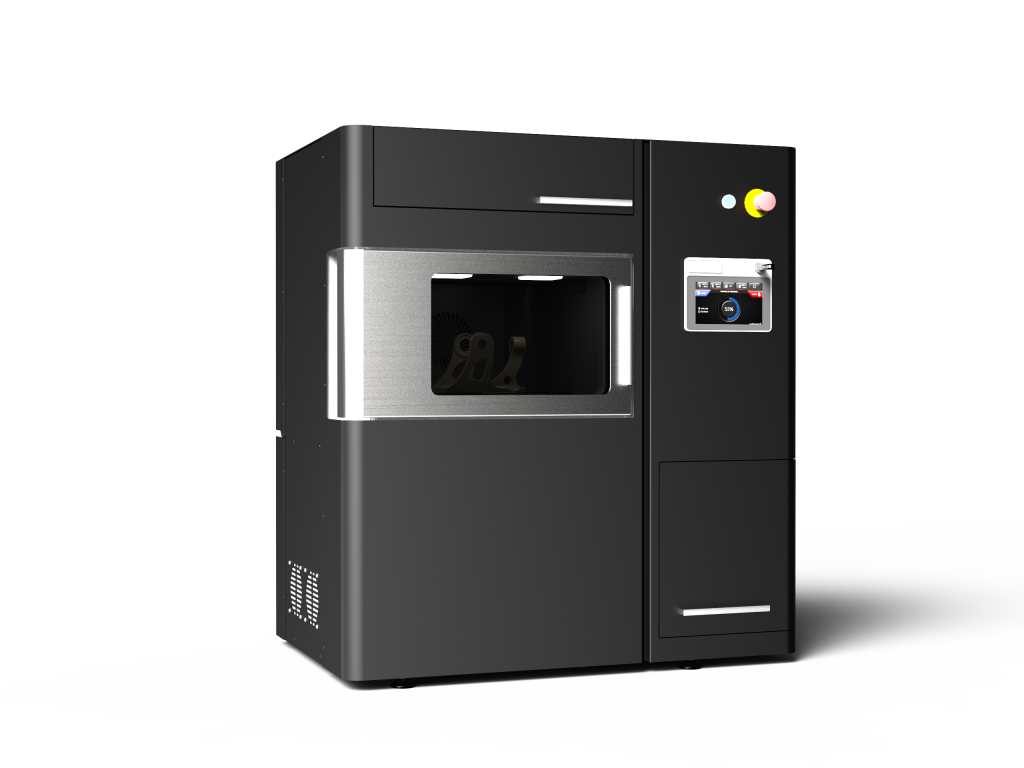
Fins have this concept called Sisu. Sisu is a kind of hail mary pass, fatalistic almost, belief in one’s own toughness, resilience and survivability in the face of adversity. It’s kind of a gritty gumption with a side of never give up. Its this inner strength that shines through in what Minifactory does. Minifactory is a small but dedicated team of 3D printer builders in Finland. They’ve got Susi in spades. Often confused with MyMinifactory this one is not a download site but a builder of some of the world’s best high-temperature printers. The team is now releasing the Minifactory Ultra.
A Minifactory Ultras part in PEI (Ultem)
The Ultra is a new high-temperature 3D printer optimized for PEEK, PEI, PEKK and other ultra-high-performance materials.
- The printer has a 330 x 180 x 180mm build volume.
- Nozzle temperature can go up to 480°C
- Chamber temperature of up to 250°C
- Servo motors instead of steppers.
- An on-board annealing system so you can post process and strengthen your parts on the machine.
- Fully automated calibration
- Two independent extruders
- Seven-inch touchscreen
- A vacuum table print bed so that print sheets can easily be added to it or removed.
- Carbon filters.
A PEKK part as it comes off the printer right, and once its annealed left.
The 100 x 80 x 100cm printer is a proper industrial device that displays good build quality. The parts that come off of it are very high quality. It is extremely difficult to 3D print PEEK. The material is difficult to process and one can get lots of issues with trying to obtain crystallization and build a part. Many 3D printers essentially ‘wick’ heat with a lot of heat flowing out of the chamber during builds. Operators and OEMs solve this by raising the nozzle temperature higher and higher. This is akin to you putting your oven on high in order to try to heat your house. Therefore many PEEK parts fail due to the temperature being too high or there being insufficient thermal control over the chamber. By focusing on good thermal management and thermal control Minifactory seems to have solved many of the issues affecting PEEK prints.
A Minifactory 9085 Ultem part
Another issue is that incomplete or improper crystallization can lead to poor part performance. This they seem to be actively trying to solve. By optimizing the machine so that it can anneal on the machine itself users can bake their parts after printing to improve the results. This removes a handling step and would be easier for operators but at the same time is not super optimal in machine utilization. The fact that they’re focussing on this though means that they understand the needs of their customers. Annealing itself is a controlled heating of the part so that stress is relieved this then can combat warping, dimensional issues and improve physical properties of parts.
The Minifactory Ultra
Sales and marketing director Olli Pihlajamäki told us:
“miniFactory is an industrial 3D printer manufacturer driven by passion for ultra-polymers and the best results for industry class 3D printed parts. miniFactory Ultra is our third endeavor into 3D printing. A culmination of our years of experience, industry know-how and our perfected madness for 3D printing.
“Biggest advantage in the miniFactory Ultra is the real capability to 3D print ultra-polymers with high strength without warping. It’s possible with the heated chamber up to 250 celsius. ULTEM (PEI), PPSU and other amorphous polymers require printing chamber temperatures above the polymers glass transition temperature (Tg). Tg is one of the most important thermophysical properties of amorphous polymers. In that temperature, polymer chains are oriented randomly and have freedom to move and polymer is in structural relaxation and cools down smoothly and evenly. From there comes the strength and dimensional accuracy to our printed ultra-polymer parts.
“PEEK, PEKK and other semi-crystalline polymers require a really sensitive printing process for optimal crystallization. For that the Ultra has unique integrated and automated annealing system which means that after a print job, the machine calculates and perform the optimal annealing process for semi-crystalline polymer parts. High quality servo motors in all axes takes care of the printing accuracy.”
Only a few years ago high-temperature desktop 3D printers didn’t exist. Now there is an expanding and growing market of credible working machines that are being used to test and make parts in some of the most high-performance materials in the polymer world. The potential market for these things is huge with many companies turning to these materials to replace metal, lightweight things and make implants. I personally believe that these kinds of systems are the future. A system that is accurate and has good thermal control and management will print any material well. Carbon filter, servos, linear guides and annealing are all features that I want on my home machine too.€45,000 is far away from the RepRap kits we started with but it’s not a lot of money if it prints high-performance parts reliably for business users. The Minifactory Ultra is available now at minifactory.fi and if you’re in Birmingham for TCT, then they’re at J18.